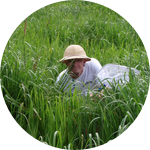Please wait...
About This Project
The Precautionary Group evaluates the adverse effects of Land-Disposed Sewage Sludge on land, water and biota.
The Yakima River and adjacent waters will be evaluated for toxic chemicals found commonly in effluents and sewage sludges from wastewater treatment plants, in CAFO runoff, and in agricultural chemicals, such as fertilizers and pesticides. Land-Disposed Sewage Sludge and agricultural chemicals are applied to Lower Yakima Valley lands that are home to vulnerable and disadvantaged people placed at risk by exposure to these toxic chemicals. This study will reveal the presence of toxic chemicals.

Browse Other Projects on Experiment
Related Projects
How do polar bears stay healthy on the world's worst diet?
Polar bears survive almost entirely on seal fat. Yet unlike humans who eat high-fat diets, polar bears never...
Uncovering hidden insect diversity associated with a likely undescribed gall-forming midge
Does a likely undescribed species of gall-forming midge (pers. comm. Ray Gagné) on Eriodictyon plants (Yerba...
Macrofungi of the California archipelago
The eight islands of the California Archipelago are a well-studied biodiversity hotspot — but we know almost...


